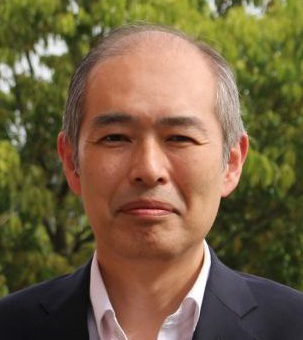Greeting

Head Investigator of “Dynamic Exciton” Area
Hiroshi Imahori
Graduate School of Engineering, Kyoto University, Japan
Light energy conversion is ubiquitously seen in nature, science, and technology. Typical examples are light-to-chemical energy conversion in photosynthesis, light-to-electrical energy conversion in optic nerve circuits and solar cells, and electricity-to-light energy conversion in displays. Initiatives to establish science of these energy conversion systems and promote their innovation are increasingly more necessary in the future for Japan to realize a prosperous and sustainable society.
In the above-mentioned light energy conversion systems, electron transfer reactions play a central role where Marcus’s electron transfer theory has made remarkable contribution in the development. In stark contrast, how the movement of atomic nucleus influences the behavior of electrons and spins involved in electron transfer reactions in a time-evolving manner has been overlooked. However, in recent years, the importance of dynamic fluctuations and vibrations in molecular systems involved in the excited-state generation, charge separation, and charge dissociation has gradually been revealed. Accordingly, by focusing on these dynamic effects on electrons and spins and introducing them into molecular design, we will be able to open up a new molecular science and functional material science.
For example, in a donor-acceptor bridged molecule using porphyrin as a donor and fullerene as an acceptor, our team members found that the efficient generation of a triplet charge-separated state occurs as a result of (i) firstly the formation of a singlet excited state via the electron transfer from the porphyrin excited singlet state to fullerene, (ii) secondly its conversion to the corresponding triplet state with charge transfer (CT) character, and (iii) finally the transformation to the triplet charge-separated state. This involves the p-orbitals of the fullerene being three-dimensionally oriented, enhancing its spin-orbit coupling with the p-orbitals of the porphyrin through the dynamic fluctuation and rotation around the bridge. We also designed a thermally-activated delayed fluorescent (TADF) molecule that controls the orientation and distance of donor and acceptor and facilitates the generation of a CT-excited singlet state from the CT-excited triplet state via a locally excited triplet state at a very large rate constant. The TADF process is opposite from the charge separation process, but can be regarded as a similar conversion process via the CT state. By manipulating the excited state, CT state, and charge-separated state (here, these states are defined integratedly as “exciton”) under such dynamic effects, further advanced functionality will be expected.
Given these backgrounds, in this Transformative Research Area (A), we propose “Dynamic Exciton” that treats “exciton” actively and comprehensively with its dynamic elements. In other words, by restructuring the science of photochemistry under “dynamic exciton” and establishing innovative transformative researches focusing on the dynamic elements, new research fields will be pioneered in organic chemistry, physical chemistry, molecular science, materials science, life science, and photochemistry. Furthermore, it is our aim to develop various photofunctions such as electronics, energy, medicine / medical care, and functional materials. Through this research area, we would like to cultivate young and female researchers who will become next-generation leaders in science and technology. We hope that many people will be interested in our challenge and support us. Thank you very much.
Hiroshi Imahori
Head Investigator of “Dynamic Exciton” Area
Graduate School of Engineering, Kyoto University, Japan
